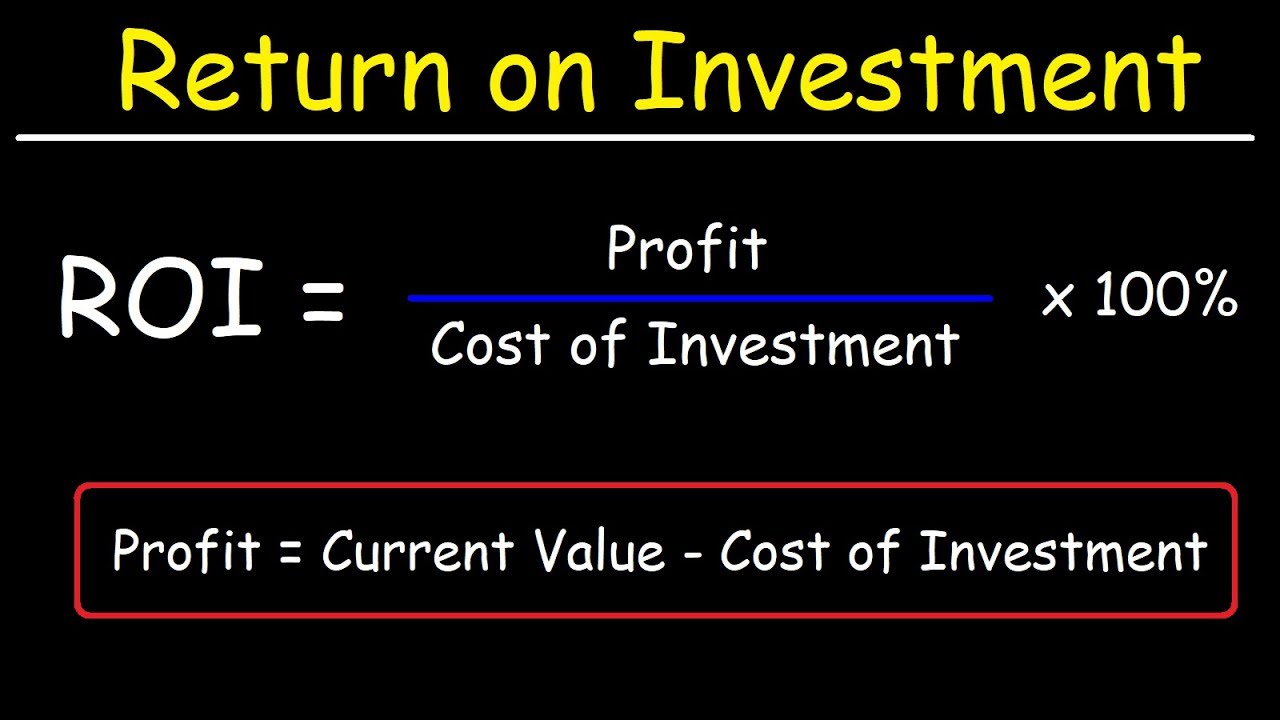Introduction
Real estate investments have long been considered one of the most lucrative and stable investment options available. Whether you’re looking to diversify your portfolio, generate passive income, or build long-term wealth, real estate investments offer a range of opportunities to meet your financial goals.
Unlike other investment vehicles like stocks and bonds, real estate investments provide tangible assets with the potential for appreciation over time. Additionally, real estate can offer reliable cash flow through rental income, making it an attractive option for both seasoned investors and those looking to enter the market.
However, before diving into the world of real estate investments, it’s essential to understand the different types of investments available, the potential risks and rewards, and the steps you need to take to ensure success. This guide will provide you with a comprehensive overview of real estate investments, helping you make informed decisions and achieve your desired outcomes.
From residential properties to commercial buildings and even raw land, the real estate market offers a wide range of investment options. Each type of investment comes with its own set of considerations, strategies, and potential returns. Understanding these distinctions will help you align your investment goals with the most suitable real estate investment opportunities.
In addition to exploring the different types of real estate investments, we will cover topics such as financing options, evaluating potential investment properties, analyzing return on investment, and managing your real estate investments effectively. By the end of this guide, you’ll have a comprehensive understanding of the real estate investment landscape, allowing you to confidently navigate and capitalize on the opportunities available.
What is Real Estate Investments?
Real estate investments refer to the acquisition, ownership, and management of properties with the goal of generating income or appreciation. It involves purchasing properties with the intention of making money either through rental income, capital gains upon resale, or a combination of both.
Real estate investments can span various types of properties, including residential homes, commercial buildings, industrial warehouses, and even raw land. The primary objective of these investments is to generate positive cash flow, create wealth, and diversify one’s investment portfolio.
Investing in real estate offers several key advantages. Firstly, it provides a tangible asset that can appreciate in value over time. Unlike other investment options, such as stocks or bonds, real estate properties are physical assets that you can see and touch. This aspect allows investors to have more control over their investment and potentially take steps to increase its value through renovations or improvements.
Furthermore, real estate investments offer the potential for consistent cash flow through rental income. By purchasing properties and renting them out to tenants, investors can generate regular income that can supplement their primary earnings or serve as a passive income stream. Rental properties have the advantage of providing a steady stream of income that is often not subject to the same volatility as other investment vehicles, such as the stock market.
Real estate investments also serve as a hedge against inflation. As the cost of living rises, so does the value of real estate properties. By investing in real estate, investors can protect their wealth from the eroding effects of inflation.
Additionally, real estate investments offer various tax benefits. Rental income is often subject to favorable tax treatment, and investors can take advantage of deductions related to mortgage interest, property taxes, and depreciation expenses. These tax benefits can significantly impact the overall return on investment.
It’s important to note that real estate investments come with their own set of risks and challenges. Market fluctuations, economic downturns, property management issues, and unexpected expenses are factors that can impact the profitability of real estate investments. Therefore, thorough market research, property due diligence, and effective management strategies are crucial to mitigate these risks.
In the following sections, we will delve deeper into the different types of real estate investments, financing options available, and the steps to take before investing. Armed with this knowledge, you’ll be better equipped to navigate the real estate investment landscape and make informed decisions.
Types of Real Estate Investments
Real estate investments encompass a wide range of property types, each with its own unique characteristics and investment opportunities. Understanding the different types of real estate investments will help you choose the most suitable option based on your financial goals, risk tolerance, and market conditions. Here are some of the main types of real estate investments:
- Residential Real Estate: Residential properties include single-family homes, condominiums, townhouses, and multi-unit apartment buildings. Investing in residential real estate can provide regular rental income and potential appreciation in value. It is a popular choice for both beginner and experienced investors due to its relatively lower entry costs and wide market demand.
- Commercial Real Estate: Commercial properties encompass office buildings, retail spaces, hotels, and industrial properties. Commercial real estate investments offer higher potential rental income and longer lease terms. Investors in commercial properties need to consider factors such as location, tenant quality, and market trends, making it a more complex investment option.
- Industrial Real Estate: Industrial properties include warehouses, distribution centers, manufacturing facilities, and storage facilities. Industrial real estate investments can provide stable income streams and potential long-term capital appreciation due to the increasing demand for logistics and e-commerce spaces. However, investing in industrial real estate typically requires a larger initial investment compared to residential properties.
- Raw Land Investments: Investing in undeveloped land can offer unique opportunities for long-term appreciation. Raw land investments allow investors to develop the land or hold it for future development and sale. However, raw land investments come with higher risks, including zoning restrictions, development costs, and uncertain market conditions.
- Real Estate Investment Trusts (REITs): REITs are publicly-traded companies that own, operate, or finance income-generating real estate. Investing in REITs allows individuals to gain exposure to real estate without directly owning properties. REITs offer diversification, professional management, and the potential for stable dividends.
Each type of real estate investment has its own advantages, considerations, and risk profiles. It’s crucial to thoroughly research and analyze the market dynamics, growth potential, and investment strategies associated with each type before making investment decisions. Additionally, working with professionals such as real estate agents, property managers, and financial advisors can provide valuable insights and guidance to maximize investment returns.
Residential Real Estate
Residential real estate investments involve purchasing properties that are used for living purposes, such as single-family homes, condominiums, townhouses, and multi-unit apartment buildings. Investing in residential real estate offers several advantages, making it a popular choice for both novice and experienced investors.
One of the main benefits of residential real estate investments is the potential for regular rental income. By leasing out residential properties to tenants, investors can generate a steady stream of cash flow. Additionally, residential rental properties tend to have lower vacancy rates compared to commercial or industrial properties, ensuring a consistent rental income for investors.
Residential real estate investments also offer the potential for long-term price appreciation. Over time, well-chosen residential properties in desirable locations tend to increase in value, allowing investors to build wealth through appreciation alone. This is particularly beneficial for investors looking for a combination of income generation and capital growth.
Furthermore, residential properties offer a wide market demand. People will always need a place to live, creating a stable and continuous demand for residential rentals or potential buyers. This factor contributes to the relatively low risk associated with residential real estate investments compared to other investment options.
Investing in residential real estate provides the opportunity for direct control and management of the property. Investors can actively participate in the property’s maintenance, renovations, and improvements to increase its value and attract potential tenants or buyers. This level of involvement allows investors to have a sense of ownership and influence over the success of their investment.
However, residential real estate investments come with their own set of considerations and challenges. Investors need to carefully analyze factors such as location, property condition, rental market trends, and local regulations before making investment decisions. Property management, tenant screening, and maintenance can also require time and effort, or additional expenses if outsourcing these tasks to professionals.
Overall, residential real estate investments provide a stable income stream, potential for appreciation, and a tangible asset that can be actively managed. It is essential for investors to conduct thorough research, evaluate their financial goals, and consider factors such as market conditions and property management requirements to make informed investment decisions in the residential real estate sector.
Commercial Real Estate
Commercial real estate investments involve properties that are used for business or commercial purposes, such as office buildings, retail spaces, hotels, and industrial complexes. Investing in commercial real estate offers unique opportunities and considerations compared to residential real estate investments.
One of the main advantages of commercial real estate investments is the potential for higher rental income. Commercial properties often command higher rental rates compared to residential properties, especially in prime locations. Additionally, commercial leases typically have longer terms, providing investors with a stable and predictable cash flow.
Commercial real estate investments also offer the potential for value appreciation over time. Well-located and well-maintained commercial properties can attract reputable tenants and experience capital appreciation as demand for commercial spaces increases. This appreciation can significantly contribute to an investor’s overall return on investment.
Furthermore, commercial real estate investments allow for diversified income streams. Investors can lease out different types of spaces, such as office units, retail storefronts, and warehouse spaces, to a variety of tenants. This diversification helps mitigate the risk of vacancy and financial losses associated with single-tenant properties.
Investing in commercial real estate often requires a higher initial investment compared to residential properties. However, commercial properties can offer higher potential financial rewards. Investors need to carefully assess factors such as location, tenant quality, and market trends when considering commercial real estate investments.
Managing commercial real estate investments can be more complex compared to residential properties. Investors may need to handle lease negotiations, property maintenance, and tenant relationships. Depending on the size and extent of the investment, hiring a property management team or professionals in the field might be necessary to ensure efficient operations and maximize returns.
Commercial real estate investments can also be influenced by economic cycles and market conditions. Economic downturns or changes in business trends can impact demand for commercial spaces. Therefore, it’s crucial for investors to stay informed about market trends, economic indicators, and local regulations that may affect the profitability of commercial real estate investments.
In summary, investing in commercial real estate offers higher rental income potential, long-term value appreciation, and diversification of income streams. However, it requires thorough market analysis, diligent property management, and a greater financial commitment compared to residential real estate investments. By carefully considering these factors, investors can capitalize on the opportunities available in the dynamic commercial real estate sector.
Industrial Real Estate
Industrial real estate investments involve properties that are primarily used for industrial purposes, such as warehouses, distribution centers, manufacturing facilities, and storage spaces. Investing in industrial real estate provides unique opportunities and considerations compared to residential and commercial real estate investments.
One of the main advantages of industrial real estate investments is the potential for stable and lucrative rental income. The increasing demand for logistics and e-commerce spaces has led to a rising need for industrial properties. This high demand can result in long-term lease agreements and reliable cash flow for investors.
Industrial properties often offer larger rental spaces and longer lease terms compared to other types of real estate. This longer lease duration allows investors to enjoy consistent rental income without frequent turnovers, reducing the risk of vacancy and income loss.
Additionally, industrial real estate investments can provide potential long-term capital appreciation. As the e-commerce industry continues to expand, the need for well-located industrial properties for efficient supply chain operations is expected to grow. Investors who own strategically positioned industrial properties may benefit from both rental income and property appreciation over time.
Investing in industrial real estate typically requires a larger initial investment compared to residential or commercial properties due to the size and specialized nature of these properties. Investors need to carefully assess factors such as location, accessibility, infrastructure, and suitability for specific industrial activities.
Managing industrial real estate investments can involve unique challenges. The maintenance and upkeep of industrial properties may require specialized knowledge or the involvement of external professionals. Additionally, investors need to stay informed about industrial market trends and evolving regulations to ensure compliance and maximize the potential of their investments.
Industrial real estate investments are influenced by economic factors, market demand, and technological advancements. Changes in manufacturing practices, advances in automation, or shifts in consumer behavior can impact the demand for industrial spaces. Therefore, it’s crucial for investors to conduct thorough market research and stay informed about industry trends to make informed investment decisions.
In summary, industrial real estate investments offer the potential for stable rental income, long-term appreciation, and exposure to the growing logistics and e-commerce sectors. However, they require a larger initial investment, specialized knowledge, and careful market analysis. By carefully evaluating these factors and staying abreast of industry developments, investors can take advantage of the opportunities available in the industrial real estate market.
Raw Land Investments
Raw land investments involve purchasing undeveloped land with the intention of holding it for future development or sale. Investing in raw land offers unique opportunities and considerations compared to other types of real estate investments.
One of the main advantages of raw land investments is the potential for long-term appreciation. As population growth continues and urban areas expand, the demand for land often increases. Investing in well-located raw land can result in significant appreciation over time, allowing investors to potentially sell the land at a higher price or develop it for profitable use.
Raw land investments also provide flexibility and potential for various uses. Investors can choose to develop the land themselves or sell it to developers for residential, commercial, or industrial projects. The ability to shape the land’s development or wait for optimal market conditions adds to the potential returns and control investors have over their investments.
Another benefit of raw land investments is the relatively lower holding costs compared to developed properties. There are no maintenance or repair expenses associated with buildings or structures. Investors only need to consider property taxes, any relevant zoning or development costs, and potential financing expenses.
However, raw land investments come with their own set of risks and challenges. Investors need to conduct thorough research and due diligence to ensure that the land is suitable for development, meets zoning requirements, and has access to necessary utilities and infrastructure.
Raw land investments require a long-term perspective, as it may take time to find the right development opportunity or an interested buyer. Additionally, the value of raw land can be influenced by factors beyond an investor’s control, such as changes in market conditions, government regulations, and economic factors.
Investing in raw land also requires a careful assessment of the property’s potential development costs. Investors need to consider factors such as land clearing, utilities installation, permit fees, and any other expenses associated with bringing the land to a usable state.
It’s important for investors to work with professionals, such as land surveyors, architects, and real estate attorneys, to navigate the complexities of raw land investments. Their expertise can contribute to identifying development potential, assessing feasibility, and ensuring compliance with local regulations.
In summary, raw land investments offer the potential for long-term appreciation, flexibility in land use, and lower holding costs compared to developed properties. However, they require thorough research, due diligence, and a long-term perspective. By carefully considering these factors and working with knowledgeable professionals, investors can tap into the opportunities presented by raw land investments.
Real Estate Investment Trusts (REITs)
Real Estate Investment Trusts, commonly known as REITs, are publicly-traded companies that own, operate, or finance income-generating real estate properties. Investing in REITs offers a unique way to gain exposure to the real estate market without directly owning and managing properties. REITs have become an increasingly popular investment option for both individual and institutional investors.
One of the main advantages of investing in REITs is the potential for regular income. REITs are required by law to distribute a significant portion of their taxable income to shareholders in the form of dividends. By investing in REITs, individuals can receive a steady stream of income similar to rental income from real estate properties.
REITs offer diversification, as they typically own and manage a portfolio of different types of properties across various sectors. This diversification helps mitigate risk by spreading investments across different locations and property types, reducing the potential impact of a downturn in any one specific area of the market.
Another advantage of investing in REITs is the liquidity they offer. Unlike traditional real estate investments, which can be illiquid and require a lengthy process to buy or sell, REITs can be bought or sold on major stock exchanges, allowing investors to easily enter or exit their positions.
Investing in REITs provides access to professional management and expertise. REITs are typically managed by professionals with extensive experience in real estate and property management. Investors benefit from the expertise of these professionals in identifying and acquiring properties, optimizing rental income, and managing the overall portfolio.
In addition to the potential for regular income, REITs also offer the potential for capital appreciation. As the value of the properties in the REIT portfolio increases over time, the underlying value of the investment can appreciate. This can result in a higher price per share and potential capital gains for investors if they decide to sell their shares.
It’s important to note that investing in REITs comes with its own set of risks. The value of REITs can fluctuate based on changes in the real estate market, interest rates, and economic conditions. Additionally, specific risks can vary depending on the type of properties owned by the REIT, such as fluctuations in occupancy rates for retail or office space.
Investors interested in REITs should carefully evaluate the track record and reputation of the management team, assess the quality and diversification of the REIT’s property portfolio, and consider factors such as dividend yield and the potential for long-term growth. Conducting thorough research and due diligence is key to making informed investment decisions in the REIT sector.
In summary, REITs offer a way to invest in real estate without the need to directly own and manage properties. They provide regular income, diversification, liquidity, and access to professional management. However, investors should be aware of the risks associated with REIT investing and carefully evaluate the specific REIT and its underlying properties before making investment decisions.
How to Get Started in Real Estate Investments
Getting started in real estate investments can seem daunting, but with the right knowledge and strategy, it can be a rewarding and profitable venture. Here are some steps to help you kickstart your journey into real estate investments:
1. Define Your Goals: Determine your financial goals and objectives for investing in real estate. Are you looking to generate passive income, build long-term wealth, or diversify your investment portfolio? Understanding your goals will help shape your investment strategy.
2. Educate Yourself: Take the time to learn about the different types of real estate investments, market trends, financing options, and investment strategies. Read books, attend seminars, and seek advice from experienced investors to gain valuable insights.
3. Assess Your Finances: Evaluate your financial situation and determine how much capital you have available to invest in real estate. Consider your credit score, debt-to-income ratio, and potential financing options.
4. Establish a Real Estate Investment Strategy: Decide on the type of real estate investments that align with your goals and risk tolerance. Will you focus on residential properties, commercial properties, or a combination? Determine your target market and investment criteria.
5. Build a Network: Connect with professionals in the real estate industry, such as real estate agents, lenders, contractors, and property managers. Networking can help you gain valuable contacts and access to potential investment opportunities.
6. Research and Analyze Properties: Conduct thorough market research to identify potential investment properties. Analyze factors such as location, property condition, market demand, rental rates, and potential for appreciation. Consider working with a real estate agent or investment advisor to assist with property evaluations.
7. Secure Financing: Explore different financing options, such as traditional mortgages, private lenders, or partnerships. Determine the best financing strategy based on your financial situation and the specific investment opportunity.
8. Conduct Due Diligence: Perform a comprehensive due diligence before making any investment decisions. This includes property inspections, title searches, review of financial statements, and understanding local regulations and zoning requirements.
9. Make an Investment: Once you have found a suitable property and completed the necessary due diligence, negotiate the purchase price and complete the transaction. Ensure that all legal and contractual obligations are met.
10. Manage Your Investment: If you are investing in rental properties, develop a management plan to ensure smooth operations. This includes tenant screening, rent collection, property maintenance, and ongoing financial analysis to maximize returns.
Remember that real estate investments require patience, expertise, and a long-term perspective. Stay updated on market trends, adapt your strategies when needed, and continuously educate yourself to make informed investment decisions. With time and experience, real estate investments can provide both financial stability and growth opportunities.
Steps to Take Before Investing
Before diving into real estate investments, it’s crucial to take certain steps to ensure you’re well-prepared and equipped to make informed decisions. Following these steps can help mitigate risks and increase the likelihood of achieving your investment goals:
1. Clarify Your Financial Goals: Determine your investment objectives and financial goals. Are you looking for long-term wealth accumulation, steady cash flow, or a combination of both? Clearly defining your goals will help shape your investment strategy.
2. Assess Your Risk Tolerance: Evaluate your tolerance for risk. Real estate investments, while generally considered stable, still carry some level of risks. Understanding your risk tolerance will guide you in choosing the right types of investments and determining how much capital you’re willing to invest.
3. Educate Yourself: Increase your knowledge and understanding of the real estate market. Familiarize yourself with different types of real estate investments, market conditions, financing options, and legal considerations. Attend seminars, read books, and engage with experienced investors to gain valuable insights.
4. Analyze Your Finances: Assess your financial situation and determine how much capital you can allocate towards real estate investments. Consider factors such as your income, expenses, debt-to-income ratio, credit score, and potential financing options.
5. Create a Budget and Investment Plan: Develop a budget that outlines your available investment capital, potential cash flow, and expected expenses. Set realistic expectations for your returns and create a solid investment plan that aligns with your financial goals.
6. Build an Emergency Fund: Before investing, it’s important to have an emergency fund in place. This fund will act as a safety net and help cover unexpected expenses or temporary income fluctuations, reducing financial stress related to your investments.
7. Establish a Support Network: Surround yourself with professionals who can provide guidance and support in your real estate journey. Build relationships with real estate agents, attorneys, lenders, and property managers who can offer valuable advice and insights.
8. Conduct Market Research: Research the real estate market in the areas you’re interested in investing. Analyze factors such as supply and demand, rental rates, vacancy rates, and potential growth opportunities. Gather data to make informed decisions about the locations and types of properties you plan to invest in.
9. Perform Due Diligence: Before investing in a property, conduct thorough due diligence. This includes obtaining property inspections, reviewing financial records, studying property history, assessing legal and ownership issues, and investigating any potential risks or liabilities.
10. Seek Professional Advice: Consider working with professionals such as real estate agents, attorneys, and financial advisors. Their expertise can help guide you through the investment process, provide legal and financial advice, and assist with negotiations and contracts.
By taking these steps before investing, you’ll be better positioned to make informed decisions and increase the likelihood of a successful real estate investment journey. Remember, research, preparation, and ongoing education are key to your long-term success in the real estate market.
Financing Options for Real Estate Investments
Real estate investments often require a significant amount of capital, and not everyone has the funds readily available to make these investments outright. Fortunately, there are various financing options available that can help you acquire properties and embark on your real estate investment journey. Here are some common financing options:
1. Traditional Bank Loans: Banks and mortgage lenders offer loans specifically designed for real estate investments. These loans typically require a down payment, and the terms and interest rates are determined based on factors such as your credit score, income, and the property’s value.
2. Hard Money Loans: Hard money loans are short-term loans provided by private investors or companies. These loans are collateralized by the property itself and are based on the property’s value rather than the borrower’s creditworthiness. Hard money loans tend to have higher interest rates and shorter repayment periods.
3. Private Financing: Private financing involves borrowing money from individuals, typically friends, family members, or other investors, to fund your real estate investments. Private financing terms can be negotiated directly between you and the lender, offering flexibility compared to traditional lending institutions.
4. Seller Financing: In some cases, the property seller may be willing to finance the purchase of the property themselves. With seller financing, you make regular payments to the seller rather than a traditional lender. This option may be beneficial if you have trouble qualifying for a bank loan or prefer more flexible terms.
5. Crowdfunding: Crowdfunding platforms allow multiple investors to contribute funds towards a real estate project. This option provides opportunities for smaller investors to participate in larger-scale projects while spreading the financial risk. Crowdfunding platforms typically have minimum investment requirements and may have specific regulations or restrictions.
6. Real Estate Investment Partnerships: Partnering with other investors can allow you to pool resources and increase your purchasing power. In a partnership, each investor contributes capital and shares in the profits and risks of the investment. It’s important to have a clear partnership agreement in place to define roles, responsibilities, and the distribution of returns.
7. Self-Directed IRAs and 401(k) Loans: If you have a self-directed IRA or a 401(k) plan, you may have the option to utilize those funds for real estate investments. These accounts allow you to invest in real estate while enjoying potential tax benefits or the ability to borrow against your retirement funds.
When exploring financing options, it’s essential to evaluate the terms, interest rates, repayment schedules, and eligibility criteria of each option. Consider working with a mortgage broker or financial advisor who specializes in real estate investments to identify the most suitable financing option for your specific needs.
Remember that obtaining financing for real estate investments will often require a down payment and proof of income or assets. Lenders will also assess your creditworthiness and the potential profitability of the investment property. Understanding your financial capabilities and exploring multiple financing avenues will help you secure the necessary funds to successfully pursue your real estate investments.
Evaluating Potential Investment Properties
When considering real estate investments, it’s essential to thoroughly evaluate potential investment properties to ensure they align with your investment goals and have the potential for financial success. Here are some key factors to consider when evaluating potential investment properties:
1. Location: Location is a critical factor in the success of a real estate investment. Research the neighborhood, proximity to amenities, schools, transportation, and employment hubs. Properties in desirable locations tend to attract quality tenants or buyers and experience higher appreciation.
2. Market Analysis: Conduct a comprehensive market analysis to understand the supply and demand dynamics, rental rates, vacancy rates, and potential growth opportunities in the area. Look for signs of favorable market conditions, such as population growth, job growth, and infrastructure development.
3. Property Condition: Assess the condition of the property, including its structural integrity and any repairs or renovations needed. Consider the costs involved in bringing the property to a suitable condition and whether it aligns with your budget and investment goals.
4. Rental Potential: Evaluate the rental potential of the property. Determine the average rental rates in the area and compare them to the property’s potential rental income. Consider factors such as local rental demand, vacancy rates, and the property’s attractiveness to potential tenants.
5. Cash Flow Analysis: Perform a cash flow analysis to determine the potential income and expenses associated with the property. Consider costs such as mortgage payments, property taxes, insurance, maintenance, and property management fees. Ensure that the property’s potential rental income can cover these expenses and provide a positive cash flow.
6. Investment Returns: Analyze the potential returns on your investment. Calculate key metrics such as the return on investment (ROI), cash-on-cash return, and capitalization rate. This analysis will help you assess the profitability and ROI potential of the investment property.
7. Financing Options: Consider the available financing options for the property and evaluate their impact on your overall investment. Assess the interest rates, loan terms, down payment requirements, and potential closing costs associated with each financing option.
8. Future Development: Evaluate the potential for future development or expansion of the property. Consider factors such as zoning regulations, potential rezoning prospects, and any upcoming infrastructure developments in the area that could positively impact the property’s value over time.
9. Legal Considerations: Ensure that the property has a clear title and no legal issues or liabilities. Conduct a review of all necessary legal documentation, such as contracts, leases, and property surveys. Consider working with a real estate attorney to ensure a thorough review of the legal aspects.
10. Professional Inspection: Schedule a professional property inspection to identify any hidden issues or potential risks. A thorough inspection will help you uncover any structural, electrical, plumbing, or termite-related problems that may require immediate attention or impact the property’s value.
Remember, conducting proper due diligence and analysis are essential when evaluating investment properties. It’s crucial to gather accurate and up-to-date information, seek professional guidance when needed, and ensure that the property aligns with your investment strategy and risk tolerance. By evaluating potential investment properties carefully, you can make informed decisions and increase your chances of realizing the potential financial rewards of your real estate investments.
Analyzing Return on Investment (ROI)
Analyzing the return on investment (ROI) is a crucial step in evaluating the profitability and performance of real estate investments. ROI measures the efficiency and effectiveness of an investment by calculating the ratio of the investment’s gains or losses relative to its costs. Here are key considerations when analyzing ROI for real estate investments:
1. Calculate Cash Flow: Begin by calculating the property’s cash flow, which is the net income generated from the investment after deducting all expenses such as mortgage payments, property taxes, insurance, maintenance costs, and property management fees. Understanding the monthly or annual cash flow will help assess the property’s income potential.
2. Determine Equity Build-up: Analyze the equity build-up over time. This refers to the portion of the property that is paid off through mortgage payments. As the mortgage principal decreases, the investor’s equity increases. This equity build-up contributes to the overall ROI of the investment.
3. Consider Potential Appreciation: Assess the potential for property appreciation. Real estate values can increase over time due to various factors such as location, market conditions, and economic growth. Consider historical trends, market forecasts, and local development plans to estimate the property’s potential appreciation, which can significantly impact ROI.
4. Evaluate Return from Rental Income: Calculate the return from rental income, taking into account both current rental rates and projected future increases. Compare the rental income against the initial investment, considering factors such as vacancy rates, tenant turnover, and potential rent increases to assess the rental income’s contribution to the overall ROI.
5. Include Tax Benefits: Consider the tax benefits associated with real estate investments. Tax deductions related to mortgage interest, property taxes, and depreciation expenses can have a positive impact on ROI. Consult with a tax professional to ensure you understand all eligible deductions and their potential impact on your return.
6. Analyze Financing Costs: Assess the financing costs associated with the investment. Calculate the total interest paid over the loan term and include it as a cost when evaluating ROI. Remember to consider any additional financing costs such as origination fees or closing costs.
7. Compare with Alternative Investments: Compare the potential ROI of the real estate investment with alternative investment options. Consider the risks, returns, and liquidity of other investment vehicles such as stocks, bonds, or mutual funds. This analysis will help determine the relative attractiveness of real estate as an investment option.
8. Incorporate the Holding Period: Consider the anticipated holding period for the investment. Real estate investments typically require a longer-term perspective. Longer holding periods can increase the potential for appreciation and cash flow, positively impacting overall ROI.
9. Take into Account Risk and Cost of Capital: Consider the associated risks and the cost of capital when analyzing ROI. Real estate investments carry risks such as market fluctuations, economic conditions, and potential vacancies. Investors should evaluate whether the potential returns adequately compensate for the associated risks and the cost of capital.
10. Regularly Monitor and Adjust: Regularly monitor the investment’s performance and adjust your analysis as necessary. Review the property’s financials, market conditions, and potential risks periodically to ensure that the investment remains aligned with your ROI expectations.
Analyzing ROI requires a comprehensive evaluation of all these factors to gain a clear understanding of the investment’s potential profitability. By conducting a thorough analysis, you can make well-informed decisions, identify areas for improvement, and compare different investment opportunities to select the most promising ones.
Managing Real Estate Investments
Once you’ve acquired real estate investments, effectively managing them is crucial to maximize returns and ensure long-term success. Effective management involves various tasks, responsibilities, and strategies to enhance property performance and mitigate risks. Here are key considerations for managing real estate investments:
1. Property Maintenance: Regular property maintenance is essential to preserve and enhance the property’s value. Implement a proactive maintenance plan to address repairs, upgrades, and preventive measures to keep the property in excellent condition. Regularly inspect the property and promptly address any maintenance issues that arise.
2. Tenant Management: If you have rental properties, effective tenant management is critical. Ensure clear and thorough tenant screening processes to select reliable and responsible tenants. Establish strong communication channels, respond promptly to tenant inquiries or requests, and enforce lease agreements and property rules consistently.
3. Rent Collection: Implement an efficient rent collection process to ensure timely rental payments. Utilize online payment systems or set up automated rent collection methods for convenience and efficiency. Promptly address any late payments or delinquencies and follow the necessary legal procedures when dealing with non-compliant tenants.
4. Financial Management: Maintain accurate financial records for your real estate investments. Implement a sound accounting system to track income, expenses, and cash flow. Regularly review financial statements, analyze profitability, and monitor key performance indicators (KPIs) such as occupancy rates, rental yields, and operating costs.
5. Property Marketing: Develop effective marketing strategies to attract potential tenants or buyers for your vacant properties. Utilize online platforms, real estate listings, social media, and network with local real estate agents to maximize property exposure. Highlight the property’s unique features and communicate its value proposition to potential tenants or buyers.
6. Legal and Regulatory Compliance: Stay up to date with applicable regulations, laws, and building codes related to property management. Ensure compliance with rental laws, health and safety regulations, fair housing laws, and other relevant legislation. Consider consulting with a real estate attorney to navigate legal complexities effectively.
7. Risk Management: Develop a risk management strategy to identify and mitigate potential risks associated with your real estate investments. Purchase appropriate insurance coverage to protect against unforeseen events such as natural disasters, liability claims, or property damage. Regularly assess and manage risks to protect your investments.
8. Market Monitoring: Stay informed about market trends, rental demand, and economic factors that can impact your real estate investments. Monitor local market conditions, rental rates, vacancy rates, and the competitive landscape. Regularly evaluate your investment’s performance against market benchmarks and adapt your strategies as needed.
9. Team Building and Outsourcing: Consider building a reliable team to support your property management tasks. This may include property managers, real estate agents, contractors, and legal professionals. Assess your strengths and weaknesses and determine which tasks could be outsourced to professionals to streamline operations.
10. Regular Evaluation and Adjustment: Continuously evaluate your real estate investments and make adjustments as necessary. Regularly assess the financial performance, ROI, and market conditions to ensure that your investments align with your goals and expectations. Be open to making necessary changes or seeking guidance from experts when needed.
Effectively managing real estate investments requires dedication, attention to detail, and a proactive approach. By implementing a comprehensive management strategy, you can optimize property performance, minimize risks, and maximize returns on your real estate investments.
Risks and Rewards of Real Estate Investments
Real estate investments offer both potential rewards and inherent risks that investors must consider. Understanding the risks and rewards associated with real estate investments is crucial for making informed decisions and managing expectations. Here are some key risks and rewards to consider:
Risks:
1. Market Fluctuations: Real estate values can be affected by economic conditions, market trends, and external factors beyond an investor’s control. Market fluctuations can lead to a decline in property values or rental demand, potentially impacting the returns on investment.
2. Economic Downturns: Economic downturns can lead to decreased demand for real estate, lower rental rates, and increased vacancy rates. Investors may experience cash flow disruptions or difficulty in selling properties during such periods.
3. Property Management Challenges: Managing rental properties can be demanding and time-consuming. Challenges may arise from tenant turnover, maintenance issues, legal complexities, or unexpected expenses. Inadequate property management can increase costs, affect occupancy rates, and impact overall profitability.
4. Financing Risks: Real estate investments often involve significant debt through mortgages or loans. Fluctuations in interest rates and changes in lending practices can impact borrowing costs and an investor’s ability to secure financing for future investments.
5. Unexpected Expenses: Real estate investments can incur unexpected expenses such as repairs, renovations, or rising property tax assessments. Failure to plan for and manage these expenses can significantly impact investment returns.
Rewards:
1. Potential for Appreciation: Real estate investments have the potential for long-term appreciation, which can lead to capital gains. Properties well-located in high-demand areas can experience substantial value appreciation over time, increasing an investor’s equity.
2. Cash Flow and Passive Income: Rental properties can generate regular cash flow through rental income. A well-managed property with stable occupancy rates and competitive rental rates can provide investors with a consistent source of passive income.
3. Diversification: Real estate investments offer diversification benefits in an investment portfolio. Adding real estate to a portfolio that includes other asset classes such as stocks and bonds can help reduce overall portfolio volatility and increase potential returns.
4. Inflation Hedge: Real estate investments can act as a hedge against inflation. As the cost of living increases, rental income and property values tend to rise, providing protection against the eroding effects of inflation on wealth and purchasing power.
5. Control and Leverage: Real estate investments give investors control over their investments. Investors can actively manage properties, make improvements to enhance value, and leverage their investments through mortgages and financing to achieve higher returns than the initial investment.
It is important to note that the risks and rewards associated with real estate investments can vary based on factors such as location, property type, market conditions, and investor expertise. Thorough research, due diligence, and ongoing evaluation are essential for managing risks and maximizing rewards in real estate investments.
Conclusion
Real estate investments offer a wealth of opportunities for individuals looking to build long-term wealth, generate passive income, and diversify their investment portfolios. Understanding the different types of real estate investments, assessing potential risks and rewards, and implementing effective management strategies are key to achieving success in this dynamic sector.
Throughout this guide, we have explored the various types of real estate investments, including residential, commercial, industrial, and raw land. Each type presents unique advantages, considerations, and potential returns. By carefully evaluating market conditions, conducting thorough due diligence, and understanding your financial goals, you can select the most suitable investment options for your needs.
Moreover, we have discussed essential steps to take before investing, such as clarifying your financial goals, assessing your risk tolerance, and educating yourself about the real estate market. These preliminary steps lay a solid foundation for your investment journey and increase your chances of making informed decisions.
Financing options and analyzing return on investment (ROI) were also explored, emphasizing the importance of understanding financing choices, calculating potential returns, and considering factors that contribute to investment profitability.
Managing real estate investments is a crucial aspect of ensuring long-term success. From property maintenance and tenant management to financial and legal compliance, effective management strategies are essential for maximizing returns and mitigating risks.
Lastly, we examined the risks and rewards associated with real estate investments. While real estate investments offer the potential for long-term appreciation, passive income, diversification, and control, they are not without risks such as market fluctuations, economic downturns, and property management challenges. Considering these factors and conducting thorough research and analysis will help you make well-informed investment decisions.
In conclusion, investing in real estate offers endless possibilities for building wealth and achieving financial objectives. By understanding the fundamentals, conducting due diligence, and implementing effective management strategies, you can navigate the real estate investment landscape with confidence and position yourself for success in this exciting and dynamic market.

























